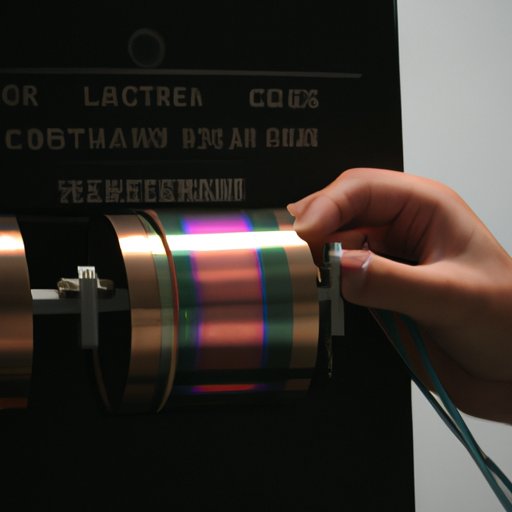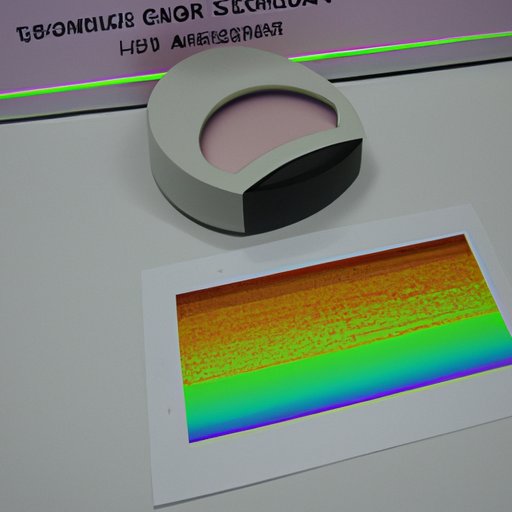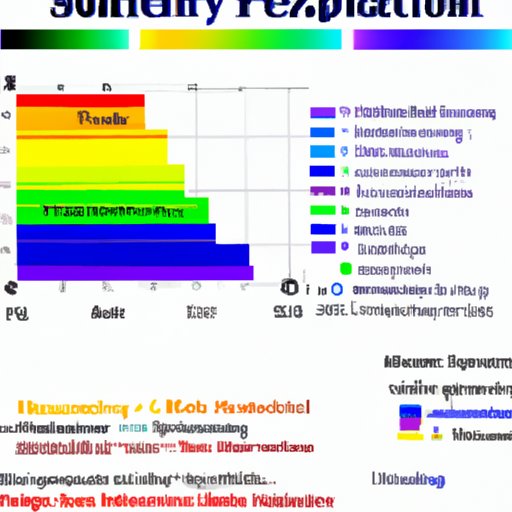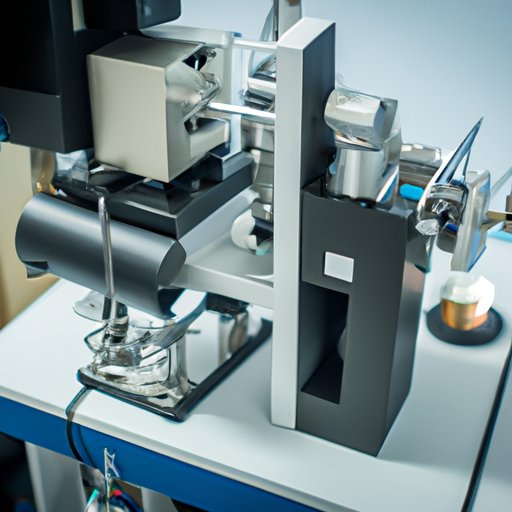Introduction
A spectrometer is a device used to measure the properties of light and other electromagnetic radiation. Spectrometers are used in various industries for applications such as analyzing the composition of a sample or measuring the intensity of light from stars or galaxies. In this article, we’ll explore how spectrometers work, from the basics of their components to the science behind their functionality.
Step-by-Step Guide to Understanding How Spectrometers Work
Spectrometers come in many different types, each designed for a specific purpose. Some are used to measure the absorption of light by a sample, while others are designed to measure the emission, reflection, or transmission of light. Depending on the type of spectrometer, different components may be present.
Let’s take a closer look at the components of a spectrometer and examine the principles behind spectroscopy. First, there is the light source, which can be anything from a laser to a flame. This is used to send light through the sample being analyzed. The light then passes through a series of lenses and filters, which help focus the light and reduce any stray light that could interfere with the analysis. Finally, the light passes through a detector, which measures the intensity of the light and converts it into a form that can be read by a computer.
The principles behind spectroscopy involve the interaction between light and matter. When light passes through a sample, some of the photons (particles of light) are absorbed by the atoms and molecules in the sample. This absorption of light causes a change in the energy levels of the atoms and molecules, which can be measured using a spectrometer. By analyzing the changes in energy levels, scientists can determine the composition of the sample.

Exploring the Science Behind Spectrometers
To understand how spectrometers work, it is important to have a basic understanding of the physics of spectroscopy. In essence, spectroscopy is the study of the interactions between light and matter. When light passes through a sample, some of the photons are absorbed by the atoms and molecules in the sample. This absorption of light causes a change in the energy levels of the atoms and molecules, which can be measured using a spectrometer. By analyzing the changes in energy levels, scientists can determine the composition of the sample.
In addition to the physics of spectroscopy, there is also a process known as spectrophotometry. This is the process of measuring the intensity of light over a range of wavelengths. This measurement can be used to identify elements in a sample, as different elements absorb light at different wavelengths. By measuring the intensity of light at each wavelength, scientists can determine the composition of the sample.

An Overview of Spectrometer Technology and Its Uses
Spectrometers come in many different types, each designed for a specific purpose. Some spectrometers are used to measure the absorption of light by a sample, while others are designed to measure the emission, reflection, or transmission of light. Different types of spectrometers are used in various industries, from analytical laboratories to manufacturing plants.
In addition to their use in industrial settings, spectrometers are also used in scientific research. Scientists use spectrometers to study the composition of stars, planets, and galaxies, as well as to analyze the chemical composition of samples. Spectrometers are also used in medical research to identify disease biomarkers and to study the effects of drugs on the body.

The Basics of Spectrometer Functionality and Applications
At its core, a spectrometer consists of four main components: the light source, the lenses and filters, the detector, and the computer. The light source is used to send light through the sample being analyzed. The lenses and filters help focus the light and reduce any stray light that could interfere with the analysis. The detector measures the intensity of the light and converts it into a form that can be read by a computer. Finally, the computer is used to analyze the data collected by the detector.
Spectrometers are used in a variety of applications, from analyzing the composition of a sample to measuring the intensity of light from stars or galaxies. They can also be used to identify elements in a sample, as different elements absorb light at different wavelengths. In addition, spectrometers can be used to measure the concentration of a particular element in a sample.
Examining How Spectrometers are Used for Scientific Analysis
Spectrometers can be used to collect a variety of data, including the absorption and emission spectra of a sample. By analyzing these spectra, scientists can determine the composition of the sample. Additionally, spectrometers can be used to measure the concentration of a particular element in a sample. This data can be used to study the effects of drugs on the body or to identify disease biomarkers.
Spectrometers can also be used to analyze the structure of molecules. By studying the vibrations of molecules, scientists can gain insight into their chemical makeup. Additionally, spectrometers can be used to study the properties of light, such as its polarization and refractive index.
Conclusion
In conclusion, a spectrometer is a device used to measure the properties of light and other electromagnetic radiation. It consists of four main components: the light source, the lenses and filters, the detector, and the computer. By analyzing the data collected by a spectrometer, scientists can determine the composition of a sample or study the properties of light. Spectrometers are used in a variety of industries and scientific research applications, making them an invaluable tool for scientists and engineers alike.
(Note: Is this article not meeting your expectations? Do you have knowledge or insights to share? Unlock new opportunities and expand your reach by joining our authors team. Click Registration to join us and share your expertise with our readers.)
